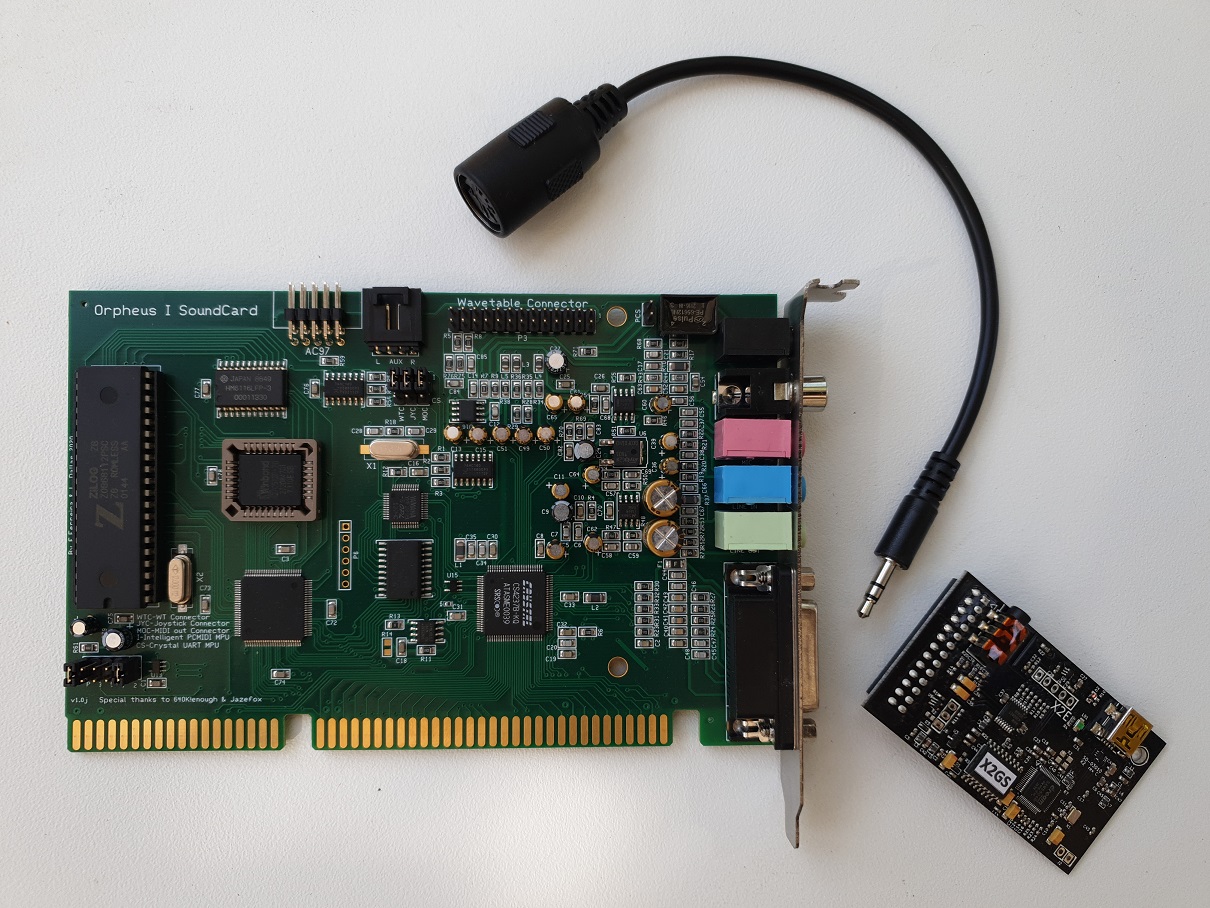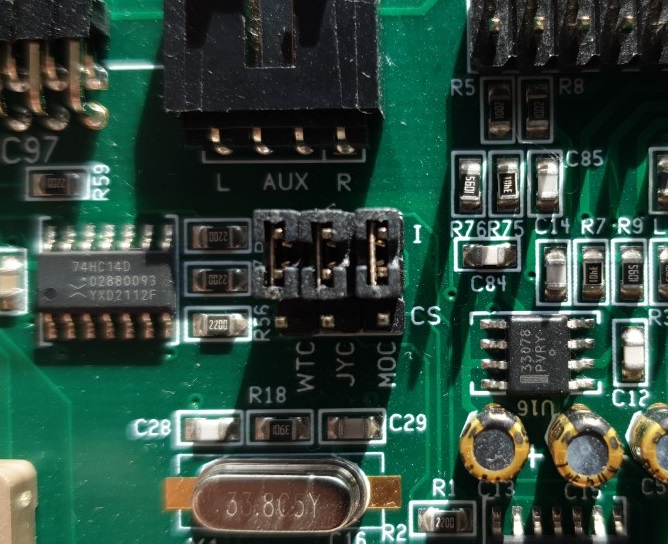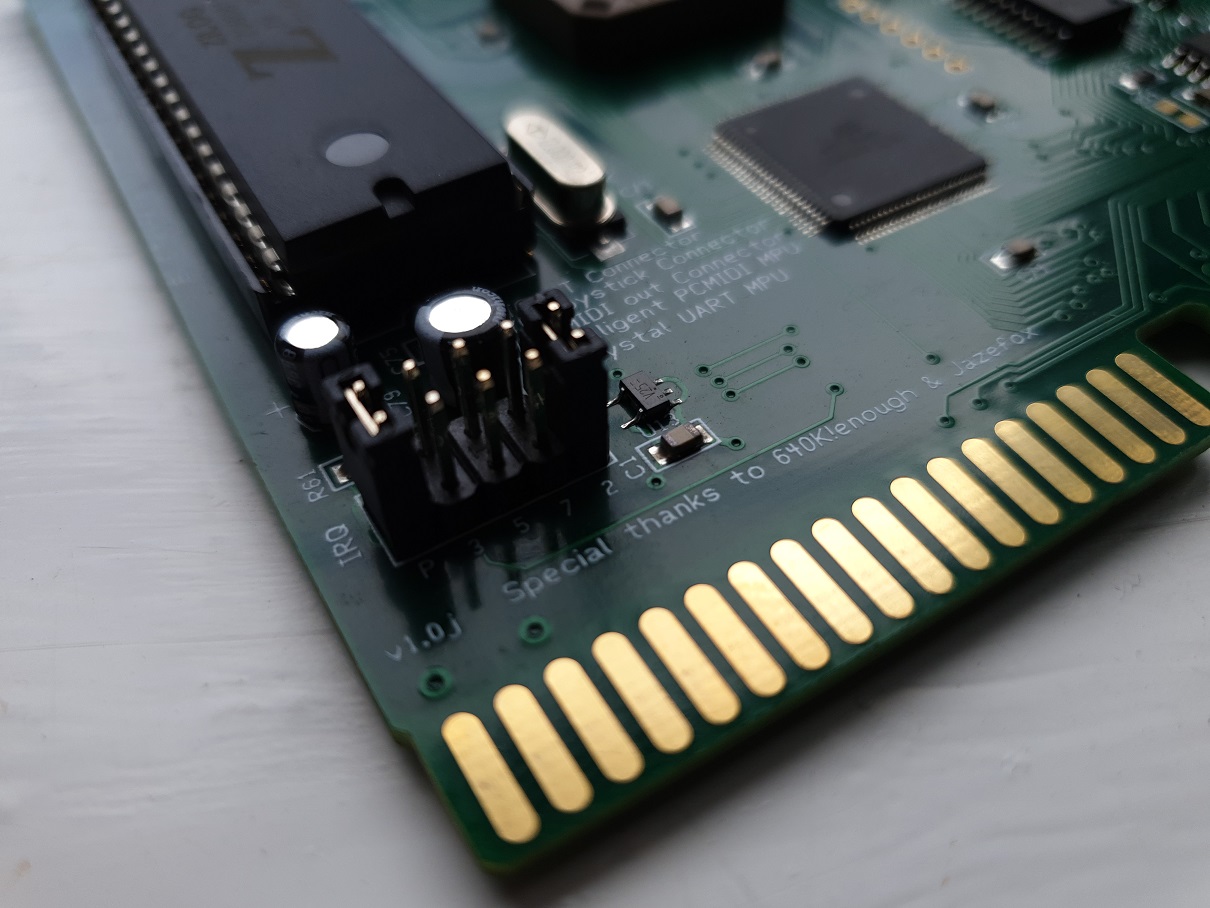Review: Orpheus I Sound Card - Part 2
5th August 2022
* This page is a work in progress, as of 4th August 2022 *
In Part 1, I introduced this brand new 16-bit ISA sound card, the Orpheus 1 - a card that aims to be all things to all people if you're a DOS gamer. I took us on a tour of the hardware and what options you can buy to suit your retro PC audio needs.
In this Part 2, we'll get it installed into one of my retro PC rigs, and configure the card for gaming use. Here's a recap picture of the card in question:

Orpheus I with optional PCMIDI and Dreamblaster X2GS Daughterboard
So let's get it configured and installed...
Jumper Configuration
The Orpheus 1 sound card does have several jumper blocks to set certain things or enable/disable them.
If you have the PCMIDI option, the set of three jumpers just below the Aux-In port near to top-centre of the card can be used to specify whether you want the PCMIDI portion of the card to control the wavetable connector, joystick connector, and the MIDI out socket, or alternatively have the Crystal CS4237B chip handle these devices (if you have the Crystal chip activated):

WTC = Wavetable connector,
JYC =
Joystick connector, and MOC = MIDI Out connector.
In all cases, setting the jumper to "I" means the PCMIDI circuitry controls that port, while setting it to "CS" means the CS4237B chip will control that port. By default, if you bought the PCMIDI option, all three of these will be set to be controlled by the PCMIDI part of the card.
If there is no PCMIDI, the jumper block has no purpose.
The second jumper block is only present if you went for the PCMIDI option, and is located in the lower-left corner of the card. It defines the MIDI port address and MIDI IRQ the card will use:

The leftmost jumper is "P" and define the PCMIDI port to use - Closed = 330h, Open = 300h
The next 4 are denoted 3, 5, 7 and 2, and define the IRQ line the PCMIDI
will use - close only one of these!
Port 330h and IRQ 2 are the default settings.
Drivers
Vogons user 640K!enough wrote the DOS driver for the Orpheus 1 card. It is called ORPHINIT